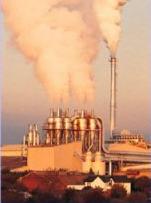
Photo from wikipedia
Abstract. Atmospheric inversions have been used for the past two decades to derive large scale constraints on the sources and sinks of CO2 into the atmosphere. The development of high… Click to show full abstract
Abstract. Atmospheric inversions have been used for the past two decades to derive large scale constraints on the sources and sinks of CO2 into the atmosphere. The development of high density in-situ surface observation networks, such as ICOS in Europe, enables in theory inversions at a resolution close to the country scale in Europe. This has led to the development of many regional inversion systems capable of assimilating these high-resolution data, in Europe and elsewhere. The EUROCOM project (EUROpean atmospheric transport inversion COMparison) is a collaboration between seven European research institutes, which aims at producing a collective assessment of the net carbon flux between the terrestrial ecosystems and the atmosphere in Europe for the period 2006–2015. It aims in particular at investigating the capacity of the inversions to deliver consistent flux estimates from the country scale up to the continental scale. The project participants were provided with a common database of in-situ observed CO2 concentrations (including the observation sites that are now part of the ICOS network), and were tasked with providing their best estimate of the net terrestrial carbon flux for that period, and for a large domain covering the entire European Union. The inversion systems differ by the transport model, the inversion approach and the choice of observation and prior constraints, enabling us to widely explore the space of uncertainties. This paper describes the intercomparison protocol and the participating systems, and it presents the first results from a reference set of inversions, at the continental scale and in four large regions. At the continental scale, the regional inversions support the assumption that European ecosystems are a relatively small sink (−0.21 ± 0.2 PgC/year). We find that the convergence of the regional inversions at this scale is not better than that obtained in state-of-the-art global inversions. However, more robust results are obtained for sub-regions within Europe, and in these areas with dense observational coverage, the objective of delivering robust country scale flux estimates appears achievable in the near future.
Journal Title: Atmospheric Chemistry and Physics
Year Published: 2020
Link to full text (if available)
Share on Social Media: Sign Up to like & get
recommendations!